
Both 35mm vs 50mm lenses are standard models that can become universal tools in any photographer's kit. Even though both sizes offer relatively similar focal lengths.
35 mm lenses provide a broader field of view and larger depth of field, which makes them the optimal choice if you don’t know whether you should get the lens for landscape, real estate, or group portrait shots. Despite being a multipurpose length, 50mm is also quite great at creating a bokeh effect and is better at taking close-up portrait shots.

35mm lenses are great for photographers, who want to capture a wider angle. They are ideal for wedding and street photographers, photojournalists, landscape shooters and travelers. Its viewing angle and aperture ration, which is often large, allows photographers to use the lens in hard-to-reach places and in low light conditions.

50mm lenses can provide a field of view of just about 40o while 35mm prime models bump that value up to 54.4o, which can be beneficial in a lot of scenarios.
Technically, a 35mm lens is considered a wide-angle lens, although it is placed at the very edge of this group. So, you’ll simply fit more of the world into each photograph, making it an amazing lens for real estate photography, landscapes, architecture, travel shots, and photos of groups of people.

The wider the focal length, the bigger the depth of field, meaning you can have a larger part of the scene in focus. As a result, 35mm lenses give you a better opportunity to capture a sharp subject even if it's not perfectly static.
If you plan to place the camera closer to the subject, such a lens will ensure you have more high-quality results to work with. That’s why 35mm is considered the superior lens for wedding photography, as it's a better fit for immortalizing candid moments.
It’s also the winner in the 35mm vs 50mm lens battle when it comes to regular day-to-day photography. 35mm models allow you to adopt a natural point-and-shoot approach that lets you spend minimum time worrying about focusing the shot and risking missing the opportune moment.

Even though 35mm models are near the top of the wide-angle lens category, the market offers primes with even wider angles, as you can pick from lengths like 28mm, 24mm, and even fish-eye lenses.
That said, one of the biggest benefits of a 35mm model is the natural feel that such a width has, meaning the distortions that are added to landscape and portrait shots are barely impactful and aren’t even noticeable to the casual viewer.

While a wide-angle shot can somewhat confuse the viewer with how much unnecessary space is included in the scene, you can always deal with such a problem by cropping the photo as you see fit during the post production stage.
That's one of the biggest benefits of working with a wide-angle model. While you can't enlarge the subject without approaching it, cropping the image allows you to achieve a similar result, as the subject will occupy a larger part of the shot.
Though most manufacturers produce 50mm lenses and the number of 35mm models is much lower, you can still find a reliable one. I chose several 35mm lenses for different budgets.
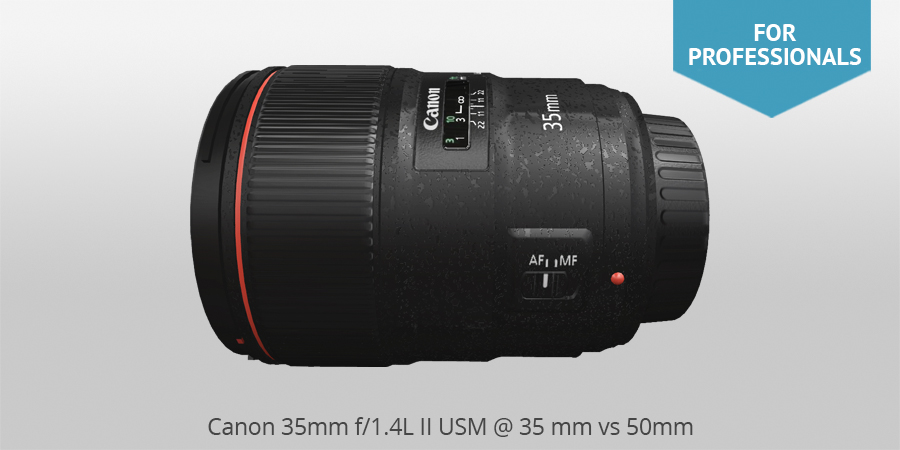
Mount: EF| Diaphragm blades: 9 | Min focus distance: 0.92ft | Max magnification: 1:4.8 | Filter size: 2.8in | Dimensions: 3.2 x 4.2 in | Weight: 26.8 oz
If you are looking for a lens for your camera for landscape photography, try this option. This 35mm lens belongs to the line of professional optics and differs from the rest with its technically perfect design. This is a sharp, exceptionally fast, and accurate autofocus, which produces beautiful, professional images.
The high degree of protection deserves special praise. This is really a lens designed for use in difficult conditions. Photojournalists, photographers, shooting sports and wedding events will surely like it. The main disadvantage is vignetting.
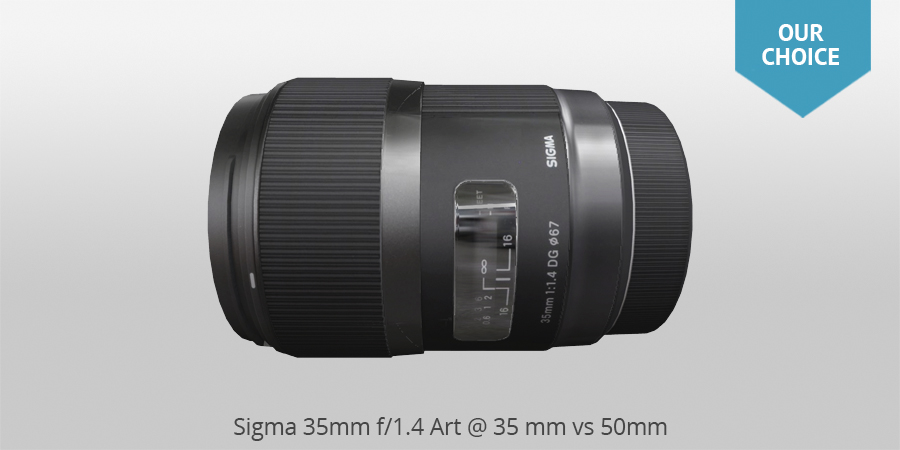
Mount: Canon EF| Diaphragm blades: 9 | Min focus distance: 11.8 in | Max magnification: 1:5.2 | Filter size: 67mm | Dimensions: 3in x 3.7in | Weight: 23.5 oz
Very high resolution, low distortion and chromatic aberration, beautiful, three-dimensional pattern - all this is available at a reasonable price. Commonly referred to as the leading lens for real estate photography, the Sigma 35mm f1.4 Art offers stunning optics that can create amazing bokeh, capture all the tiniest details, and produce natural colors. It has a focal length of 35 mm and a bright aperture, meaning it’s a good choice for weddings, events, and urban photos while also being suitable for filming videos.
Made specifically for mirrorless cameras, this 35 F1.4 DG DN lens is pleasantly lightweight and can add a perfect balance to a compact camera while providing an array of pro-grade features.
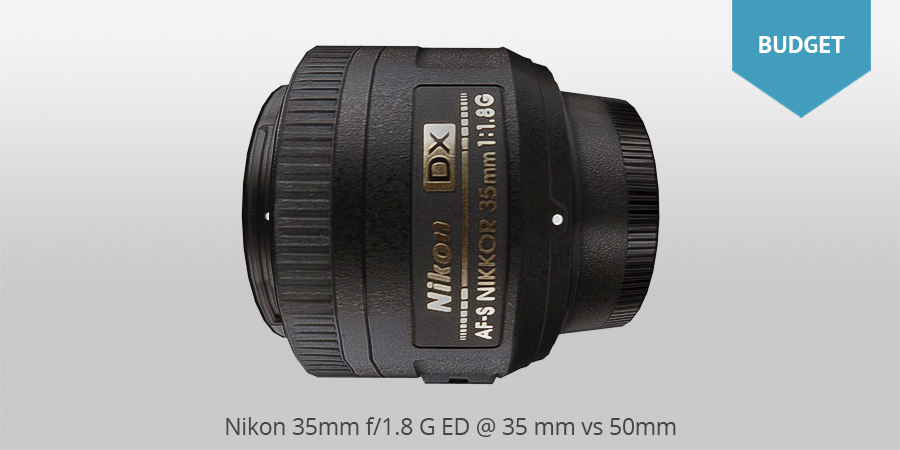
Mount: Nikon F-Bayonet | Diaphragm blades: 7 | Min focus distance: 0.98 ft | Max magnification: 1:6.25 | Filter size: 67mm | Dimensions: 2.8 in x 2.1 in | Weight: 7oz
Nikkor 35mm follows in the footsteps of Nikon's f/1.8 budget line of lenses. Its sharpness, micro-contrast, color rendition, and other optical qualities are very impressive for such a price, which makes it another “great addition” to the already powerful Nikkor lens line. Judging by the tests, its sharpness is very high, surpassing Nikkor f/1.4G and Sigma 35mm f/1.4 Art lenses with a maximum center output.
This is one of the best Nikon lenses for weddings. Autofocus performance and accuracy are also impressive even when shooting in low light. However, vignetting levels are quite high, and chromatic aberrations tend to be rather strong.

Classic 50mm lenses has been the standard for photographers for a long time. Usually, this is the next lens that I recommend to people when they want to upgrade their kit lens. There are several reasons for that.

The biggest difference between 35mm and 50mm lenses is that the former captures the scene at a bit of a distance while the latter pulls it closer to the viewer.
You’re bound to run into a situation when you can’t employ zoom or a broader field of view will just cause unnecessary clutter. 50mm lenses provide a narrower shot that will help focus the viewer’s entire attention on the subject of your portrait photography.

Even though a 35mm lens can encompass a large scene and maintain high sharpness, it can’t come close to a 50mm model at its broadest aperture when it comes to separating the subject from the background. As a result, the latter is the perfect lens for portraits, meaning you’ll have no trouble isolating the model from the background while focusing the viewer’s attention entirely on the facial features, attire, or pose of the subject.
Such a small depth of field can also help enhance your photo with a cinematic feel, as the soft, somewhat unfocused areas make the image feel like it was taken for the silver screen. Additionally, a wide aperture is highly beneficial for low-light shooting conditions.

If you don’t have a lot of funds, a 50mm lens is the appealing option, meaning it’s the clear winner in the 50mm vs 35mm battle for budget-oriented photographers. Regardless of the manufacturer and whether you’re getting a Canon or Nikon portrait lens, 50mm models will always be significantly cheaper. That is explained by the simpler build of a 50mm lens and the smaller number of used elements. Given that it's still a universal lens and it can be used for any genre from tabletop photography to wedding photos, it’s an incredibly attractive price for a workhorse lens.

50mm allows you to take a different look at the world. It lets you discover the perspective in a new way and perceive the environment through peripheral vision. If you use wide angle lenses, you may experience some problems when taking photos, such as distortion, thickening of the object’s edges in the image, or stretching people's features.
50mm lenses will not cause such trouble. You don't have to fix overly sharp noses or long arms. Make sure to compare 35mm vs 50mm lens and take this aspect into account when you choose equipment for shooting portraits.

35mm lenses are heavier and bulkier than their 50mm counterparts. Consider this if you plan on long shooting. Moreover, the 50mm lens is the best option for photographers who have to move a lot between locations. It takes up less space in your camera bag and is more portable.
The choice of 50mm lenses seems to be endless. Each company has at least two 50mm lenses on sale, but most often, there are a lot more of them. Such an abundance of options makes it difficult to choose the best options, so I compiled my favorite lenses to recommend.

Mount: Canon EF | Diaphragm blades: 9 | Min focus distance: 17.1 in | Max magnification: 1:7.4 | Filter size: 77mm | Dimensions: 3.3 in x 2.7 in | Weight: 17.8 oz
This lens includes an impressive range of features at an affordable price. Photographers working in extreme environments will appreciate its durable case. The Sigma 50mm lens is a smart choice for those who specialize in travel shot. It delivers excellent center sharpness at F/1.4 thanks to the HSM focusing.
This lens works well in combination with full-frame cameras. It allows you to take photos with accurate colors both in the center and along the edges. When comparing 50mm vs 35mm lens, you will see that this one is suitable for taking pictures in poor light conditions as well as handheld photography. It is also one of the most popular lenses for product photography. Attach it to your camera for product photography and you will get outstanding images.
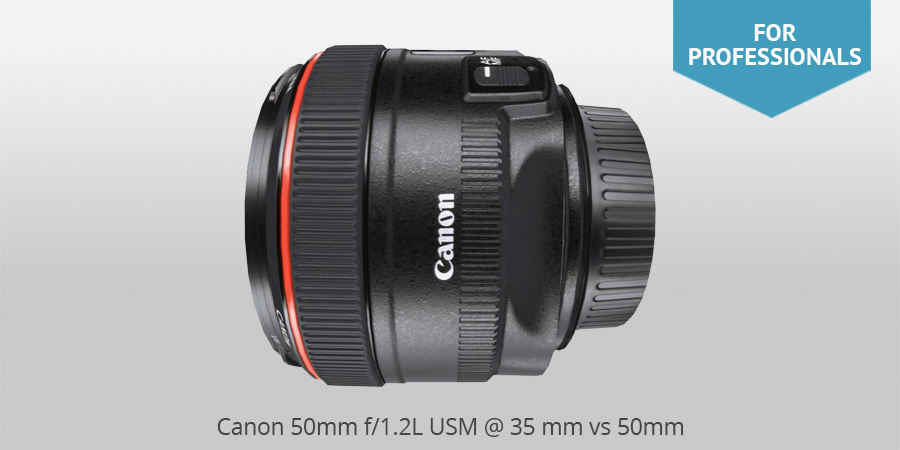
Mount: Canon EF | Min focus distance: 1.48ft | Max magnification: 1:6.7 | Filter size: 72mm | Dimensions: 3.36in x 2.58in | Weight: 20.8oz
The key feature of the Canon EF 50mm f/1.2L USM is its super-bright aperture. Besides, it stands out for its advanced optical layout and solid physical design. The incredibly fast f/1.2 maximum aperture lets you control the depth of field for isolating subjects and producing flattering focus effects.
Thanks to the Super Spectra coating, the lens produces less ghosting and glare. What's more, you get amazing contrast and color accuracy in all lighting conditions. A ring-type USM provides fast and silent autofocus performance. You can also control the focus manually. This is a great option if you are looking for the best Canon wedding lens. It does an excellent job when you need to take bridal portraits or group pictures.
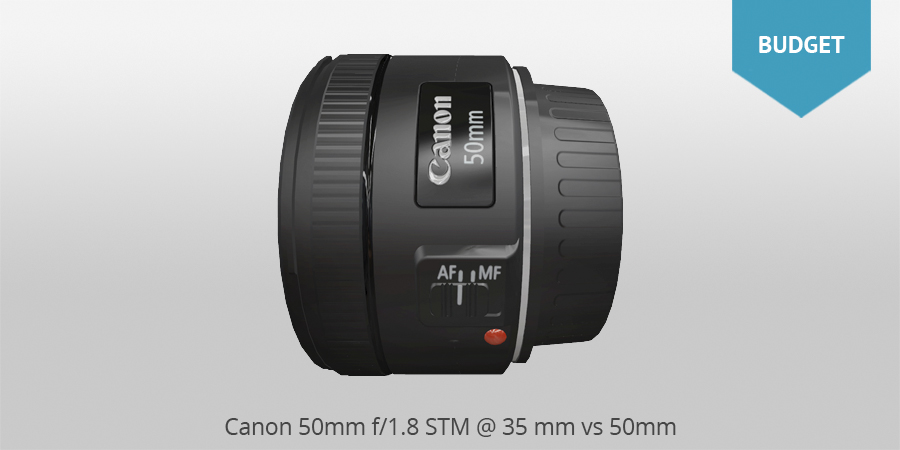
Mount: Canon EF | Diaphragm blades: 7 | Min focus distance: 1.15ft | Max magnification: 0.21x | Filter size: 49mm | Dimensions: 2.7 x 1.5 in | Weight: 5.6oz
Canon EF 50mm f/1.8 STM can be called the perfect lens for an amateur photographer. This affordable lens allows you to take photos with flattering bokeh. It supports top optical quality, fast autofocus and other impressive features. The only significant disadvantage is the maximum aperture.
It is sold at a reasonable price and has solid build quality. The new metal mount makes it safe to attach. If you have a limited budget, take this lens. By the way, many experts consider this model to be one of the best lenses for newborn photography.
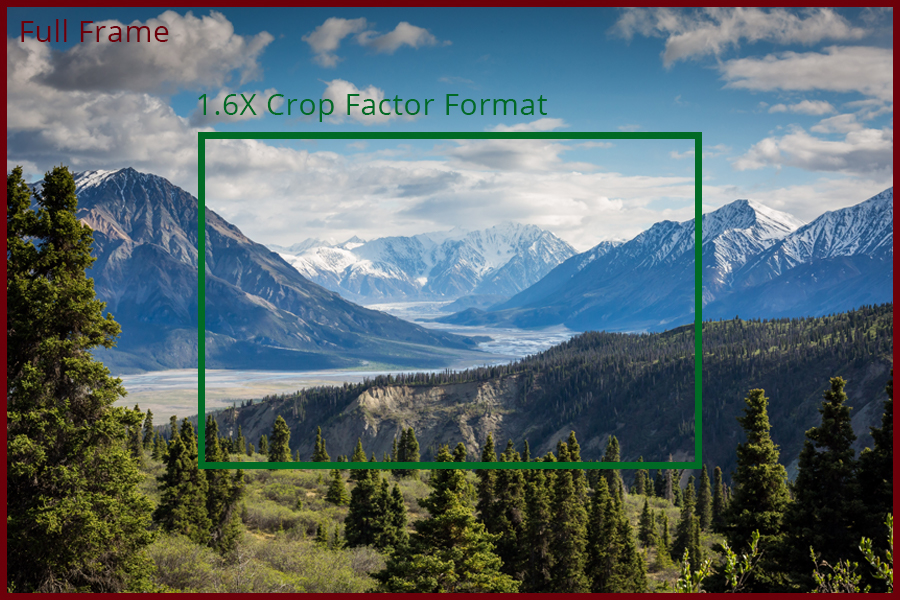
It makes no sense to make a 35mm vs 50mm comparison, if we are talking about different sensor types. Different cameras have different sensor sizes. A full frame camera is simply a camera with a sensor of the same size as 35mm film. Depending on the full frame or crop sensor, the lenses will act as a different focal length because of the difference in sensor size.
If you use a 50mm lens on a crop sensor, it becomes 75mm. In other words, you'll get a photo that looks just like it was taken with a 75mm lens paired with a full-frame camera. Since the crop sensor affects the output image size, you need to choose the right lens.
To get a photo that matches the picture shot with a 50mm lens on a full-frame camera, you should use a 35mm lens combined with a crop sensor. A 24mm one will provide you with a 35mm look. Don’t forget about this nuance when you are looking for the cheapest full frame camera.
There is no obvious leader in the 35mm vs 50mm battle. Each lens is suitable for specific needs and delivers excellent results in different situations. You must consider your goals and the particular genre of photography you specialize in.
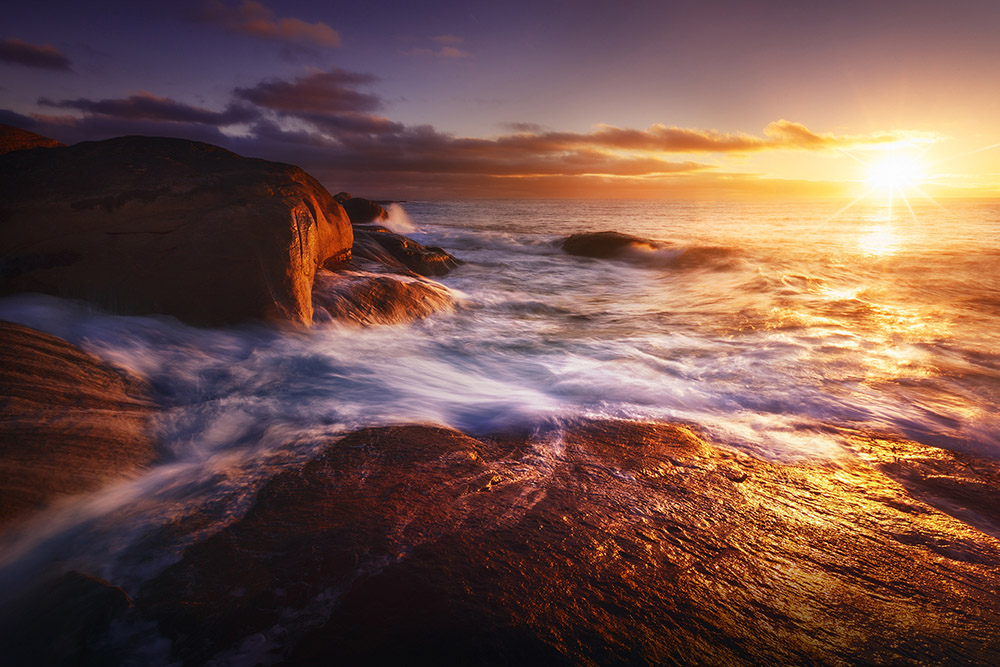
If you want a wider focal length, I recommend choosing a 35mm prime lens. This is a great option for both studio and outdoor shooting. It’s suitable for such genres as landscape, architecture, real estate shots and more. However, keep in mind that using these lenses you may notice various kinds of distortion. The edges of elements may appear thicker and people's features may look stretched. On the other hand, these are excellent lenses for family portraits and group photos as you can fit more people in the frame.

The 50mm option is a wise decision for those who only plan to use one lens. Portrait photographers choose this lens because it produces less distortion. As a result, people look more natural. Beautiful bokeh and a shallower depth of field are other pluses. However, this is not the best option for a photo session in a small space. It will be a challenge to move around and take good pictures.
As for me, I use a 50mm for most general shooting projects. Despite its limited flexibility, it handles most scenarios well and works great with wide scenes. If you can afford either 35mm or 50mm, I recommend you opt for a 50mm lens. On the other hand, if you can afford it, get both for better flexibility in shooting.